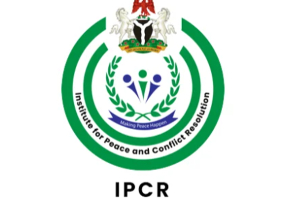The Governor of the Bank of Ghana (BoG), Dr Ernest Addison has revealed that central bank set an agenda to resolve the insolvent institutions to prevent spillovers to other institutions, work with the undercapitalized institutions to recapitalize to required thresholds and strengthen the regulatory and supervisory frameworks guiding the banking sector.
Speaking during the GIMPA’s Biennial Law virtual conference, Dr Addison said banks and Specialized Deposit-Taking Institutions (SDIs) are at the forefront of implementing the policy measures taken to counter the economic impact of the COVID-19.
Three years ago, he said, the Bank of Ghana embarked on a comprehensive reform process to clean up the banking and the SDIs sectors of our economy.
These reforms, according to him, were predicated on the findings of Banking sector Asset Quality Reviews carried out in 2015 and updated in 2016 which revealed that several banks in Ghana were severely undercapitalized and insolvent.
“The Bank of Ghana set an agenda to resolve the insolvent institutions to prevent spillovers to other institutions, work with the undercapitalized institutions to recapitalize to required thresholds and strengthen the regulatory and supervisory frameworks guiding the banking sector.
“The reform exercise covered the resolution of four hundred and twenty (420) weak institutions made up of insolvent banks and SDIs. These included nine (9) banks, fifteen (15) savings and loans companies, eight (8) finance houses, three-hundred and forty-seven (347) microfinance institutions, thirty-nine (39) microcredit institutions, one (1) leasing company, and one (1) remittance company. The revocation of these 420 licences was necessary to clean the financial sector and reduce contagion risks while creating an environment for stronger and well-run institutions to thrive and play their expected intermediary role of supporting the economy.
“Mr Chairman, these resolved institutions had several deficiencies. Some of them were set up overnight with little or no capital and by persons with questionable backgrounds with little or no experience in running banks.
“A common thread was that they were all managed or controlled by shareholders with complete disregard for prudential norms and best practices in corporate governance.
“It was clear that they were set up to get access to depositors’ funds to finance other businesses of shareholders or other related or connected companies. In the process, oligarchies were formed involving various groups of companies under the control of common shareholding aided by their relationship with political authorities. The Bank of Ghana, as the regulator and supervisor of the industry, was ineffective during the period. Poor licensing practices led to licences being issued without the appropriate due diligence on shareholders and their sources of capital. The Bank over activated its role as a lender of last resort and granted excessive amounts of liquidity support to failing banks, without addressing the underlying problems that led to the illiquidity and insolvency of these institutions.
“The underlying causes of the failure of multiple savings and loans, finance houses, and microfinance companies were no different. Poor licensing standards, weak capital, weak governance and accountability structures, lending to related parties and cronies, poor risk management, and misreporting were very prevalent in the industry.
“The Bank of Ghana raised the minimum capital requirement for the banks to GH¢400 million from GH¢120million by 31st December 2018. This was a key policy aimed at strengthening banks to become more resilient, as well as strengthen their capacity to lend to better support economic growth.
“At the end of the exercise in December 2018, the number of banks had reduced to twenty-three (23) either by shareholders raising capital, through mergers, by acquisition through other banks, or the Government-administered scheme called the Ghana Amalgamated Trust. The recapitalisation repositioned the banking sector and made it better capitalized, liquid, stronger, and more resilient.”
Business News of Friday, 7 August 2020
Source: laudbusiness.com
BoG blocked failed banks from spilling over to other institutions – Governor
Entertainment












